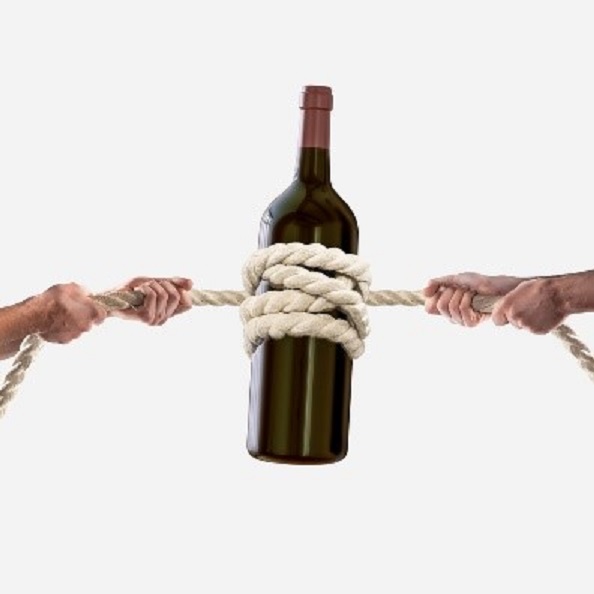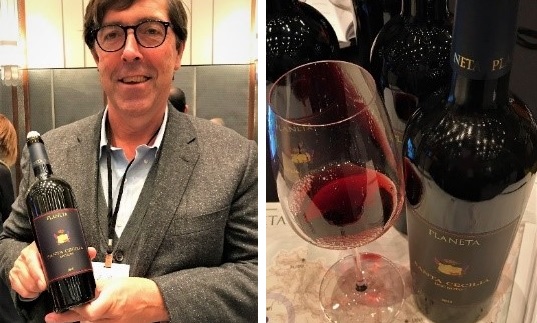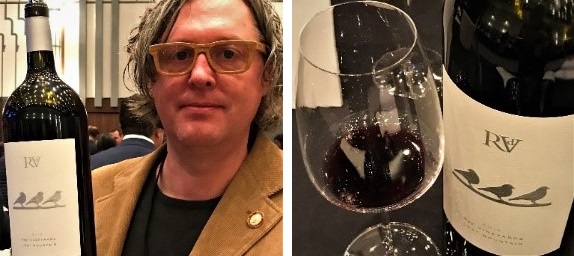
A Big Deal for Wine Partisans
If you have anything to do with wines, this is for you
If you grow grapes, make wine, drink wine, sell wine, are a wine educator, wine writer, or have anything at all to do with the wine industry, then it is likely that you would have been spotted tasting wine in New York at the recent Robert Parker, Matter of Taste event (2019).
This exclusive program is part of a global series produced and directed for Robert Parker Wine Advocate members and their guests. As the hundreds (thousands?) of wine followers strolled the auditorium floor, they had the opportunity to explore 250 wines in a walk-about tasting, each one rated 93 points (or higher) by the Robert Parker team of wine reviewers. For additional fees, attendees were offered the opportunity to experience Master Classes that focused on Champagnes, Barbaresco, and Cabernet Sauvignon.
Which Side on You On
In a 2014 Wine Spectator story, Matt Kramer observed that wine consumers had become partisan. On one side is the Casual Wine Drinker, (CWD). Believing that wine is a perfect beverage and might have a preference for a Chardonnay or a Merlot, will stop at a local wine shop (or Duane Reade), purchase a bottle, and hurry home to enjoy it with dinner. This CWD has no idea that there is a war (crusade?) being fought in what Kramer calls the “fine-wine aisle.”
The wine producing side of the wine war/crusade believes it is their mission to produce a consistently good drinking wine. This group has no problem, according to Kramer, in using “technology, enzymes, vacuum concentrator, reverse osmosis, added tannins and wine concentrate” to bring this beverage to the market at a value price. This group is termed “Mainstream Mob.”
The other side, according to Kramer, finds that “ideology is everything” and termed the group Natural Posse (NP). The focus here is on “winemaking purity,” resulting in limiting the addition of sulfur dioxide, rejection of high tech (i.e. reverse osmosis and vacuum concentrators), no filtration and a commitment to organic and biodynamic vineyard management.
Although my first impression of the Robert Parker wine lovers placed them squarely in the NP, purity lane, after conversations with many attendees, it turns out the RPWG followers are a very diversified group. The bottom line of my non-scientific research: The Robert Parker fans really like to drink wine and for many it is easier to follow the Parker numbers than to spend time and money exploring on their own, or relying on their wine shop retailer.
So – in the middle of the day (at lunch) or at the end of the day (Aperitivo and dinner), the best wine to order? The wine that you personally like, pairs well with your dining selections, and also respects your budget. There is absolutely no need to “go high or go home.”
A few of my favorite wines from A Matter of Taste:
1. 2014. Domaine Jean Chartron. Batard Montrachet Grand Cru. Burgundy. Grape Varietal: Chardonnay
Type of soil: clay and limestone. Winemaking: 100%-barrel fermentation; 10 – 40% new oak barrels, 60% barrels aged 1, 2 and 3 years in the air-conditioned cuverie.
The preferred origin of oak is primarily Allier with a smaller percentage from Vosges. Maturing on fine lees for 14 months in barrel and 4 months in tank. Alcoholic fermentation lasts from 6-8 weeks and is followed by malolactic fermentation with the assistance of an optimal cellar temperature of 62F. At this time the wines are lightly stirred – depending on their level of evolution.
Once the malolactic fermentation is complete, the wines are racked and the maturing process begins, always in barrels and cold cellars (52-53F) for a period of 8-12 months, according to the appellation and vintage. A light fining takes place before bottling.
Batard-Montrachet is a grand cru vineyard at the bottom of the Montrachet hills, across from the communes of Chassagne and Puligny-Montrachet. The area is considered one of the best terroirs in the world for the Chardonnay grape variety. The underlying rocks date from the Jurassic era, 175 million years BC. Exposures lie to the east and the south.
The history of the vineyard starts in the Middle ages, the work of the Cistercian abbey of Maizieres and the Lords of Chagny. The wines of Montrachet came into their own in the 17th century. Jean Edouard Dupard, the first of the dynasty (1859), received permission to associate the name of the village to the most famous vineyard, Le Montrachet. The area is composed of parcels of different types and structures of soil, along with geological variations that deliver a complex and diverse range of wines.
Domain Chartron is considered one of the most superb estates in the village of Puligny Montrachet, with a special nod to the premier and grand crus vineyards. Jean – Michel Chartron is the fifth generation in charge of the family domain.
Notes.
The eye is rewarded with a clear almost transparent hue adorned with old gold highlights. The nose finds an aroma that suggests honeysuckle, green grass after a rain and wet rocks. The palate discovers luxurious freshness with refreshing acidity and minerality that delivers a long mouthwatering finish. Pair with foie gras, caviar, lobster, crawfish, and large wild prawns.
2. 2015. Planeta. Noto Santa Cecilia. 100 percent Nero d’Avola. Sicily. Vinification: destalking followed by 21 days on the skins; after racking malolactic fermentation in stainless steel; maturation for 14 moths in barriques. Maturation in Allier oak barriques used 2-3 times.
This wine highlights the most important Sicilian grape variety, Nero d’Avola. The area of Noto (DOC Noto) is located at the southern end of Sicily with white limestone, breezes from two seas, and ancient vines. The 2015 Noto Santa Cecilia has won many awards including: 94+ points from Robert Parker Wine Advocate, 94 points from Decanter, 93 points from James Suckling and 91+ points from Vinous.
Planeta participates in SOSTAIN, the first project of the Italian environmental wine growing certification program developed by the University of Piacenza in collaboration with the University of Mila. Planeta and Tasca d’Almerita link traditional and organic viticulture with the application of scientific and technological innovations.
Notes.
Ruby red trending to violet attracts the eye, while spice and fruit along with hints of orange peel and chocolate delight nose. The palate finds suggestions of balsamic along with soft but obvious tannins. The finish is complex and interesting with hints of blackberries and black cherries tagging along. Pair with burgers, pizza, or spicy pork.
3. 2014. RdV. Lost Mountain. Virginia. Bordeaux Blend/Red. 72 percent Cabernet Sauvignon, 16 percent Cabernet Franc, 12 percent Merlot.
It is interesting to note that wine production in Virginia started at the beginning of the 17th century by the Virginia Company of London who decided that the Jamestown settlers could cultivate European vines. Sadly, the experiment was unsuccessful as fungal diseases thrived in the humid climate.
Fortunately, this scenario has changed and currently the vinifera varieties dominate the Virginia vineyards. In addition, the use of modern technology and vineyard management, including canopy considerations and the use of fungicides and smart site selection the quality of the wines has improved and the wines compete successfully in international venues and there are over 280 wineries spanning the state.
RdV is owned by Rutger de Vink, a Marine who earned his MBA from Northwestern and worked briefly in IT before starting on the vine path. He apprenticed with Virginia’s Linden Vineyards as well as other wineries in California and Bordeaux and started RdV in 2004.
The RdV wine label has a family connection. De Vink is from The Netherlands and deVink is Dutch for “finch.” Rutgers grandfather assisted downed Allied pilots during World War II. When captured he was sent to a concentration camp and escaped. DeVink found a notebook from his grandfather that had three finches stamped on the outside. In memory and in respect for his family the RdV wine labels features the 3 finches (2 looking forward and 1 looking back- to honor the past).
RdV covers 16 acres (11 separate vineyards) of vines planted on the south-facing hillsides of the Blue Ridge Mountains, approximately 60 miles west of Washington, DC. Forty percent or the acreage is planted with Cabernet Sauvignon, 40 percent Merlot, 12 percent Cabernet Franc and 8 percent Petit Verdot. Piles of granite rock surround the closely-spaced vines to assist in temperature moderation. The 30,000 vines are planted by hand, and vineyard management focuses on sustainable viticulture.
The vineyard produces approximately 2000 cases of wine each year and they are only available through the wine club, direct sales at the winery or a few high-end restaurants in the DC area.
Notes.
Deep ruby red/purple to the eye, the nose is rewarded with spice (think cinnamon) and cherries. Slight herbal notes and tannins add interest to the palate and contribute to a long and delicious finish. Pair with beef tenderloin, lamb or venison.
A Matter of Taste: The Event


2014. Domaine Jean Chartron. Batard Montrachet Grand Cru. Burgundy

2015. Planeta. Noto Santa Cecilia. Sicily

2014. RdV. Lost Mountain. Virginia
© Dr. Elinor Garely. This copyright article, including photos, may not be reproduced without written permission from the author.
